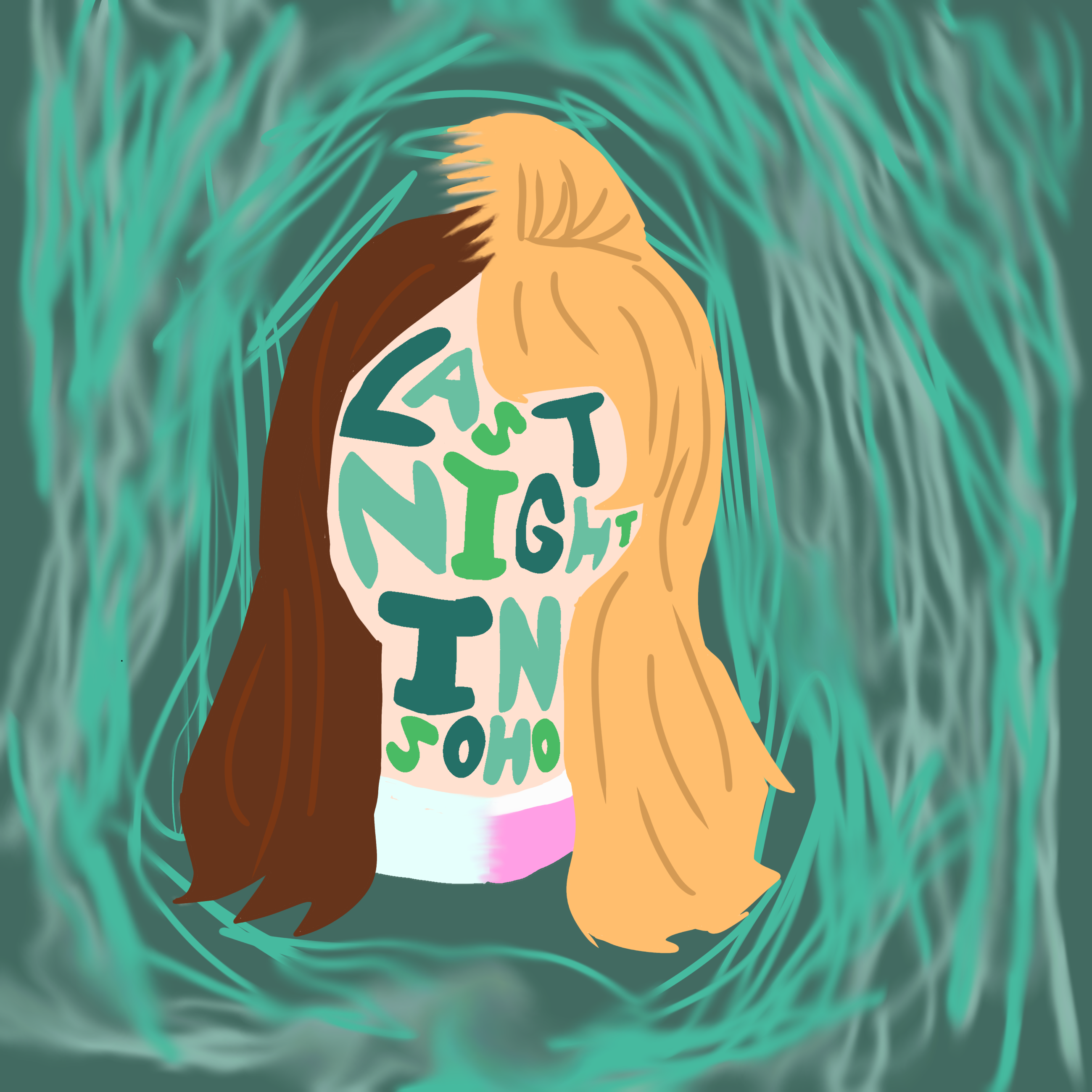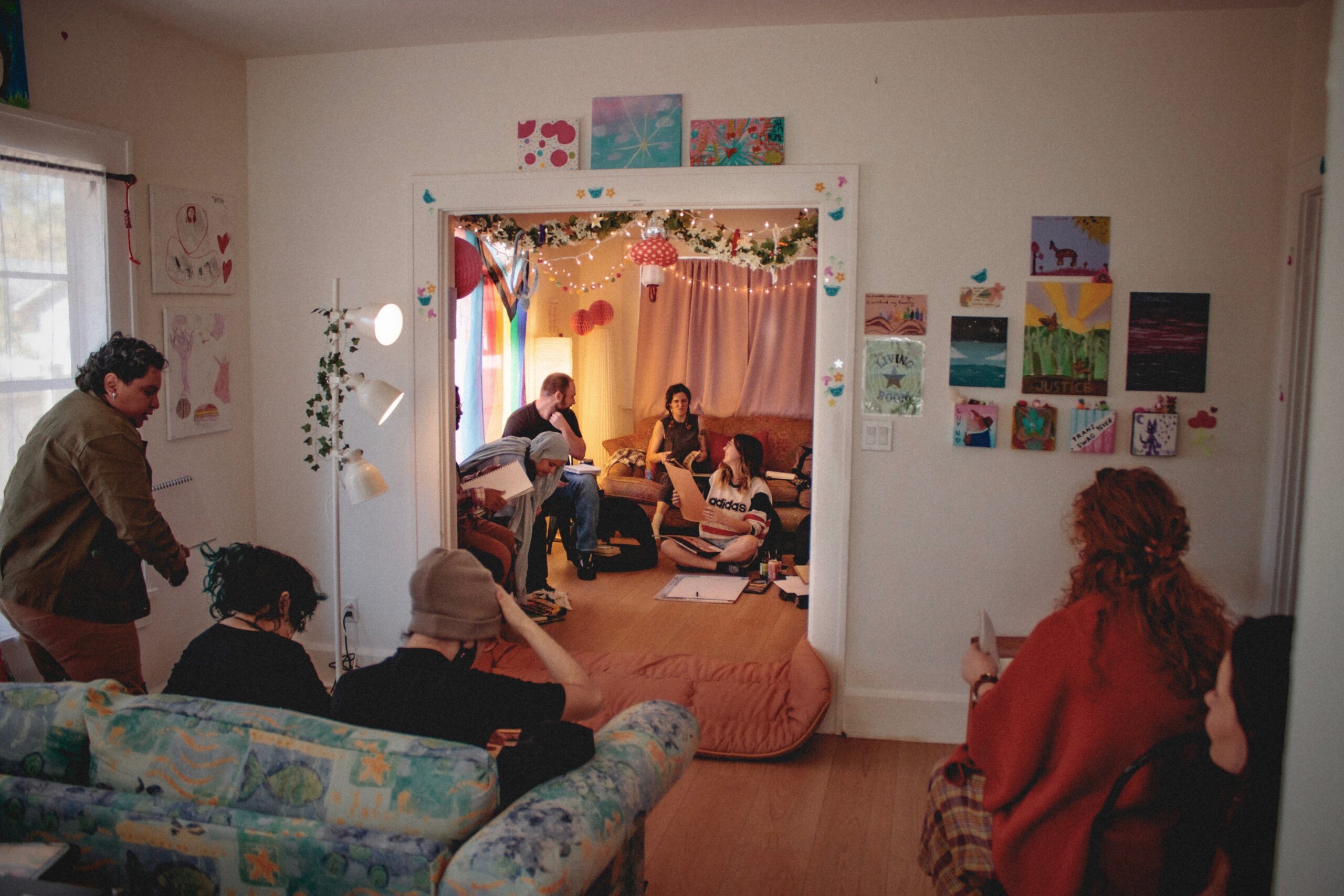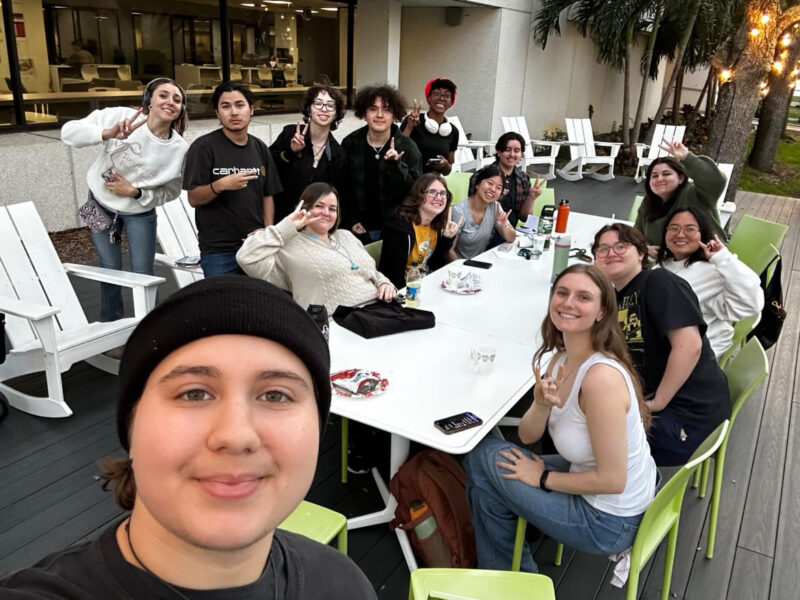‘Last Night in Soho’ explores modern gender issues in a 1960s setting.
Courtesy of Michelle Pham | The Crow’s Nest
By Aubrey Carr
Past films like “Shaun of the Dead” and “Baby Driver” have made director Edgar Wright’s cinematic style a recognizable sight within the world of film. In many ways though, “Last Night in Soho” could not be further from the filmmaker’s usual work.
Gone are the usual running gags and darkly comedic tone, replaced instead by a stylish nostalgia-fueled psychological mystery.
The movie stars Thomasin McKenzie (“Jojo Rabbit”) as Eloise, an aspiring fashion designer with a mysterious history of mental illness.
Upon moving to the fashionable Soho district of London, Eloise finds herself transported into the 1960s, possessing the body of a wannabe singer, Sandie (Anya Taylor-Joy). Soon, the glitz of the 60s wears off when Sandie’s story takes a twisted turn, revealing the dark underbelly of the glamorous city.
Though the movie is a psychological thriller at its core, its sympathetic characters and emotionally grueling storyline provide the film with layers that are lacking in many of today’s horror movies. As much as “Last Night in Soho” is a thriller it is also a mystery, a drama and a tragedy.
Wright’s stunning visuals are mesmerizing, fully capturing the viewer’s attention from the start.
The film’s use of reflection to simultaneously convey the experiences of both Eloise and Sandie is not only effective, but also amazingly well-crafted. It is in these effects that one can tell the amount of careful consideration put into every scene of the movie.
By far the biggest difference between “Last Night in Soho” and Wright’s previous work is the film’s overt focus on femininity. Although Wright has an extensive filmography, this is the first of his films to feature a female protagonist.
Ironically, this unprecedented exploration of the female experience is exactly where the film finds its footing as a thriller.
Most of the true scares in “Last Night in Soho” result from scenes depicting the misogyny present in not only the 1960s, but also in the world today.
In her pursuit of stardom, Sandie has been coerced into an increasingly violent life of sex work, a tragic story mirrored by Eloise’s own jarring experiences with a variety of overbearing men found around the streets of Soho.
Sandie’s boyfriend and manager, Jack (Matt Smith), takes on the role of villain for the first half of the movie, having emotionally manipulated Sandie into prostitution. Smith’s portrayal as Jack is eerily reminiscent of the real-world reality of a toxic relationship.
The terror of gender-based violence takes a more literal turn when Eloise is stalked by ghostly apparitions of Sandie’s perpetrators. Most of the movie’s more typical horror elements come into play through these visions.
The apparitions are accompanied by an unneeded addition of jump-scares and loud musical cues. They are effective at creating a quick fright, but they feel out of place next to the more atmospheric thrills of the rest of the film.
Additionally, the tacked-on jumps undermine the seriousness of the film’s topic matter. As if to say the characters’ experiences could only be viewed as scary if a more typical horror lens was placed on them.
Even despite its iffy scares, “Last Night in Soho” was a beautifully crafted film and one of this year’s greatest thrillers. Accompanied by a killer 1960s-inspired soundtrack and a star-studded cast, the movie’s stylistic exploration of female trauma made for a painfully engrossing watch.
[4/5 stars]



